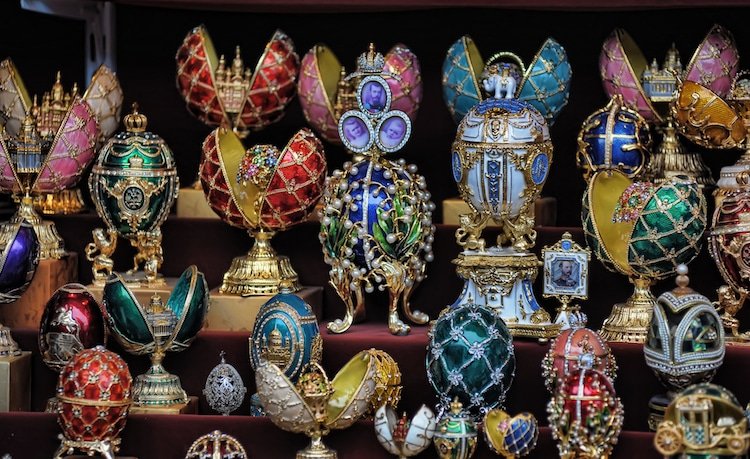When it comes to the marriage of art and luxury, few objects rival the mystique of the Fabergé eggs. Crafted between 1885 and 1917 by the House of Fabergé in St. Petersburg, Russia, these ornate, jewel encrusted eggs were far more than extravagant Easter gifts, they were political symbols, artistic triumphs, and testaments to the opulence of imperial Russia on the eve of its collapse. Today, they remain among the most coveted art objects in the world, fetching tens of millions at auction and inspiring endless fascination.
Origins: The Tsar’s Gift
The story began in 1885, when Tsar Alexander III commissioned the first Fabergé egg as an Easter present for his wife, Empress Maria Feodorovna. Easter, the most important celebration in the Russian Orthodox calendar, traditionally involved gifting eggs, symbols of resurrection and renewal. But this was no ordinary egg. The “Hen Egg,” as it came to be called, was a white enamel shell that opened to reveal a golden yolk, which itself contained a golden hen, and inside the hen, a tiny diamond crown and ruby pendant.
The Empress was enchanted, and the tradition became an annual ritual. Each year, the Tsar ordered a new egg, each one unique, each containing a hidden “surprise.” After Alexander’s death, his son Nicholas II continued the tradition, commissioning two eggs per year, one for his mother and one for his wife, Empress Alexandra.
The Artistry
Peter Carl Fabergé, the master jeweler behind the creations, was given complete creative freedom. Drawing on Russian, French, and Rococo influences, he turned the eggs into a platform for artistic experimentation. Materials included gold, platinum, diamonds, sapphires, pearls, and enamels in every color imaginable. Techniques like guilloché (engine turned engraving under translucent enamel) gave the eggs their distinctive shimmer.
But what made them truly remarkable were the surprises hidden within, miniature portraits, mechanical swans, tiny trains, clocks, and even a working replica of the royal yacht. The eggs were marvels of both artistry and engineering, combining luxury materials with almost playful ingenuity.

Symbol of Luxury and Power
The Fabergé eggs embodied the extravagance of the Romanov dynasty. They weren’t simply luxury objects, they were political statements. Each egg reminded the Empresses of the stability, wealth, and divine right of the monarchy. At the same time, they projected to the world the sheer cultural and financial power of Russia’s ruling family.
Yet this opulence was a double edged sword. As the empire slid toward revolution, the Fabergé eggs became symbols of excess, glaring reminders of a dynasty increasingly disconnected from the poverty and discontent of its people. By 1917, when the Russian Revolution erupted, only 50 imperial eggs had been completed. The House of Fabergé was nationalized, Peter Carl Fabergé fled to Switzerland, and the Romanovs were executed.
Dispersal and Legacy
After the fall of the Romanovs, the eggs were scattered. Many were seized by the Bolsheviks and later sold off by Stalin to raise funds. Today, of the 50 known Imperial eggs, only 43 survive. Some reside in museums such as the Kremlin Armoury and the Fabergé Museum in St. Petersburg, while others are in private collections belonging to oligarchs and collectors like the late Malcolm Forbes.
At auctions, Fabergé eggs have commanded extraordinary prices, one sold to Russian billionaire Viktor Vekselberg for around $100 million. They remain objects of both financial and cultural desire, embodying a unique combination of rarity, craftsmanship, and historical resonance.

More Than Objects
The Fabergé eggs are more than decorative luxuries. They are cultural artifacts that encapsulate the contradictions of their time, unmatched artistry alongside glaring inequality, intimate family gifts that doubled as propaganda, fragile beauty against the backdrop of political collapse.
In the contemporary art and luxury market, they stand as symbols of the ultimate collectible, rare, storied, and impossible to replicate. Each egg whispers of vanished empires, lost dynasties, and the enduring human urge to pour immense creativity into objects that dazzle the eye and outlast the ages.
Written by: Christine Daoud
Published on: 28th of August, 2025